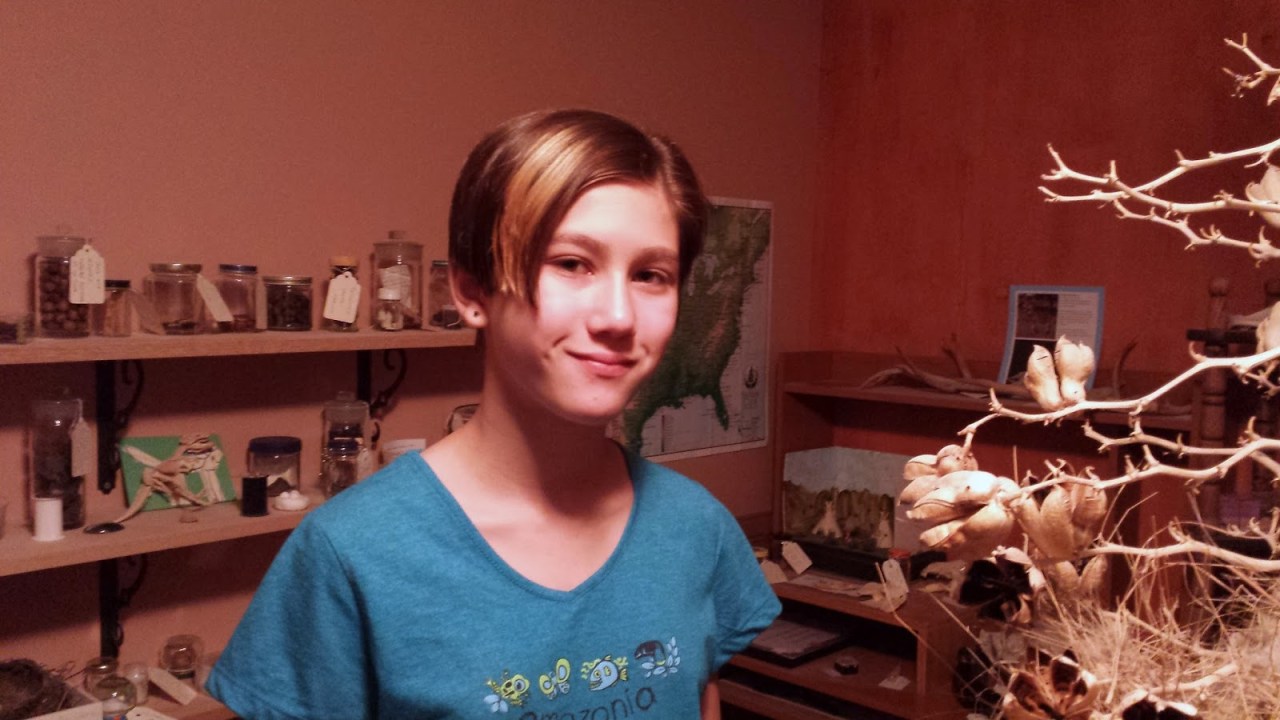
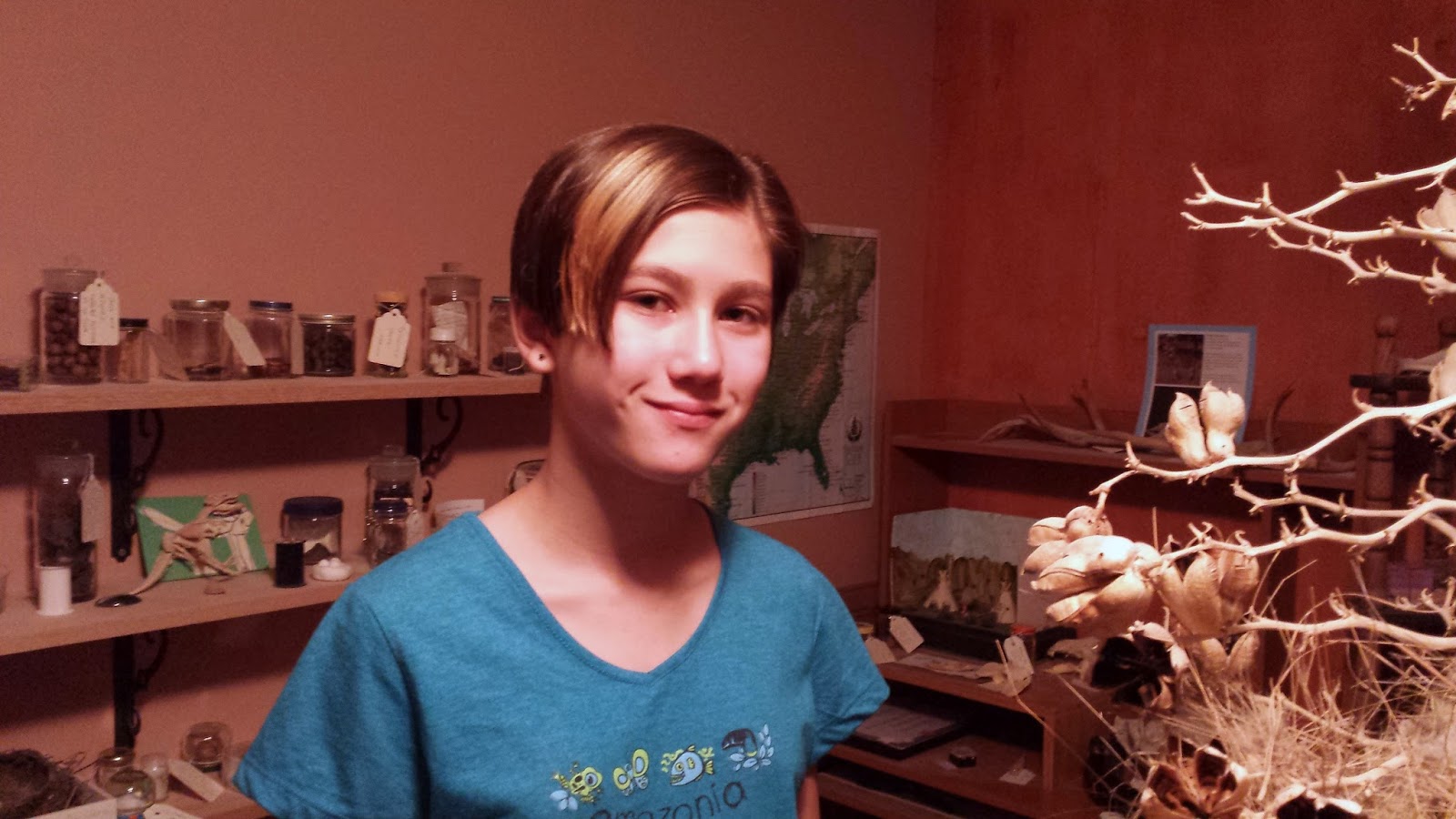 |
| Silvia Liu |
Today’s interviewees invite you to follow them on Facebook at Silvia’s Nature Museum and Tiny Natural History Museum.
[Introductions and camera adjusting]
MARIA AND MILLER: So where is your museum?
SILVIA: In my basement.
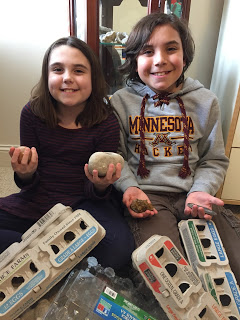 |
| Maria and Miller Williams |
MARIA AND MILLER: OK, where do you live?
SILVIA: In Kansas. Lawrence, KS.
MARIA AND MILLER: Okay, want to see a tour of our museum?
SILVIA: Sure.
MARIA AND MILLER: All right, well, this is our museum and we have a garden right here. Growing some plants: snake gourd is growing out of control. But, we have things like a cow pelvis shark jaw, barnacles. Lots of things, arrowheads over here. We have some feathers. And here’s our pets: fish, like a hermit crab and beta fish. Then some fossils: ammonites, dino poo, fossilized fish. We have some rocks: rock towers, geodes over here, some sedimentary rocks, gold ore.
SILVIA: Yeah, I can see it. That’s cool.
MARIA AND MILLER: Do you want to show us your museum?
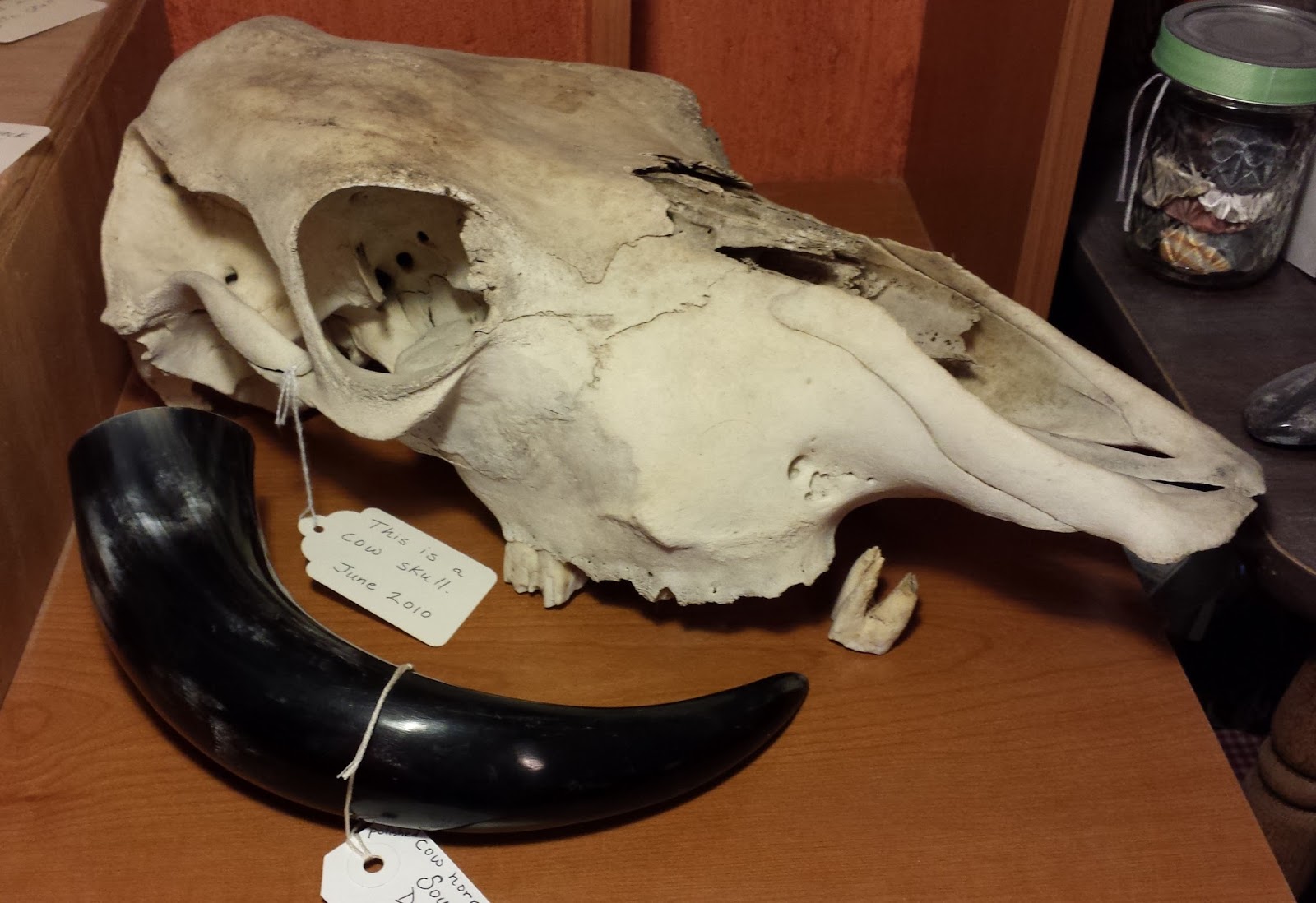 |
| Cow skull & polished cow horn Silvia’s Nature Museum |
SILVIA: Well, the computer’s big and it’s downstairs. But I can tell you what I have in it. I have a few horseshoe crabs, which are really cool. And I have lots of different things. I think the biggest thing I have is a cow skull. It’s like [gestures with hands] pretty big. My grandpa sent it to me. Oh yeah, I have a Facebook page “Silvia’s Nature Museum”, so I have a few things of what I have in my museum there.
MARIA AND MILLER: So, I guess I can like it on Facebook and see what’s going on. So, the lady that organized this gave us a few questions to ask. Okay, uh, one second. Sorry, um. So, the first question is, why did you decide to start a museum in your home.
SILVIA: Yeah, that’s the same question she gave me. And I like to collect things, so I decided that it would be really fun. My first thing that I found and collected for my museum was a baby turtle. I still have it. It’s, like, mummified, kind of, because I found it on a walk to a nearby lake to my grandma’s house. We were on a walk and I found it next to the lake.
MARIA AND MILLER: That’s pretty cool. Like, petrified and stuff?
SILVIA: That was one of the reasons that I started. I was five or six and I decided that it was fun to collect things like that. So I collected more things for my museum.
MARIA AND MILLER: How many things do you have in your museum?
SILVIA: I’m not really sure. Like, a lot. It takes up one room of the basement. It has a little giftshop on top of a file cabinet and I have buttons and postcards there. And, I also have shelves, organized on the wall, on the other side from the gift shop. I have a plant life shelf, an ocean shelf, and fossils.
MARIA AND MILLER: We have a tiny little gift shop, too. Not much, but it’s a start. Second question, what do you think museums could be doing differently to be serving people your age?
SILVIA: I think they should make things a little shorter, because not all people are extremely tall.
MARIA AND MILLER: Yeah. I was sometimes at museums and there were these little kids saying “Can you lift me up? I can’t see the turtle.” Yeah.
SILVIA: Yeah, like maybe if they made a display that had, maybe if they couldn’t get it the right size [shorter], they could have a periscope for lower so you could see what’s in the higher display case. ‘Cause that’d be a good idea.
MARIA AND MILLER: I think a good thing they could do would be to have kids there, because some people have no idea how to talk to kids. They talk to them like they’re adults, and the kids are like, “What?” so they should have kids to help.
SILVIA: So, the third question is when you are 50 years old, in what ways do think museum will be the same that they are now and how do might they have changed?
MARIA AND MILLER: We think that they’d be more like you’d imagine they’d be, for example, invisibility cloaks or flying cars and stuff that you’d think would pop into your head.
SILVIA: Also, maybe more advanced technology.
MARIA AND MILLER: Definitely.
SILVIA: Like, maybe a screen that made it look 3D so that you could move the object that you’re looking at. And you can zoom in on it so that you wouldn’t get too near the actual thing, in case it was rare or too damageable.
MARIA AND MILLER: How old are you?
SILVIA: 11.
MARIA AND MILLER: I’m 10 and I’m 9. Last question, do you see yourself working in museums when you grow up and in what role?
SILVIA: I think I might work in museums when I grow up. I like the idea of being around stuff that people can see and that are displayed to the public.
MARIA: If paleontology doesn’t work out, I’d like to be a docent in a museum.
MILLER: Yeah, like she said, if paleontology doesn’t work out, I’d be security, I guess.
SILVIA: Yeah, I think I’d like paleontology. I really wanted to be a paleontologist when I was little – really little. When all the other kids were like “I want to be a veterinarian. I want to be a teacher.” I was like “I want to be a paleontologist!” *giggles*
MARIA AND MILLER: Yeah! And like, “Whaaa?” *giggles*
Miller: What did you say when you were 3 years old?
MARIA: When dinosaurs walk on the earth, you’ll know it’s me who made that happen. I was watching videos about cloning stuff, and kind of got into a craze about that.
MARIA AND MILLER: What do you want to be when you grow up?
SILVIA: I’m not sure. I kind of want to be a teacher now, but I’m not sure exactly.
MARIA AND MILLER: You don’t really have to decide now.
SILVIA: I typed up a few more questions. What are your favorite objects in your museum.
MARIA AND MILLER: Oh, okay.
SILVIA: For me, it’s the baby turtle that I really like. It’s really small and it’s fun. I have a few other things. I have a coyote skull. My grandpa sends me skeletons every so often, and stuff, because he’s really nice and he works in a museum, too. So, for my birthday, it’s like “Oh, I got a skull in the mail.”
MARIA AND MILLER: Well, we have quite a few things. We have an alligator skull. It’s wired shut because it keeps falling open.
SILVIA: It’s really big. My cow skull’s pretty big, too. I have a fish fossil that’s in a little square chunk of limestone, or whatever it’s fossilized in, that I got. I had an opening at the museum and friends came over. One of my mom’s friends, for the giftshop they didn’t bring money but they brought a fossil, to donate and trade.
MARIA AND MILLER: Cool. Does it look like this? [shows fossil]
SILVIA: Yeah, kind of.
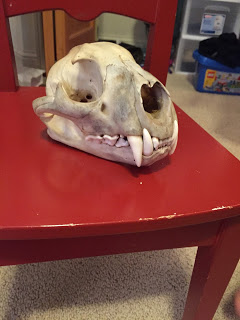 |
| Mountain Lion skull Tiny Natural History Museum |
MARIA AND MILLER: How you got yours is pretty interesting. My brother got this, it’s a mountain lion skull. So we also got this, a snapping turtle skull.
SILVIA: It’s very large for a turtle.
MARIA AND MILLER: Yeah, we went to the Bell Museum and they had really tiny ones, and we thought our was bigger. It must have been a monster of its kind. Any other favorite items?
SILVIA: There’s a shell that my mom brought back from something. It’s really pretty. It has, like, little designs just naturally on it. It’s really nice. I have some big sand dollars and sea urchins.
MARIA AND MILLER: We have a sea urchin, too. We have a few that are painted. Do you listen to “Brains On”. It’s a podcast. It’s really good. It’s about science and these kids come up and ask questions and then they get answered. It’s through NPR.
SILVIA: [to her mom] Can you bring something up?
MARIA AND MILLER: I think you can just bring up a random fossil.
SILVIA: Yeah, like just bring something interesting. So, suggestions. I also have an emu egg in a jar.
MARIA AND MILLER: What is it?
SILVIA: It’s a large egg. I got it for Easter, the Easter Bunny brought it and left if in the chicken coop.
[Silvia reads the label] Okay, it says “Collected by Chris Bryan in Ft. Worth, TX. 14 October 2012. Everything is bigger in Texas.” It’s an acorn.
MARIA AND MILLER: Whoa! That’s big!
SILVIA: Here’s the turtle.
MARIA AND MILLER: Wow, poor thing. How old were you when you started the museum.
SILVIA: Well, the turtle says “Collected near Potters Lake May 2009”, so, ummm, I was 4 and we build the shelves that summer.
MARIA AND MILLER: So it’s been around a long time. A lot longer than ours.
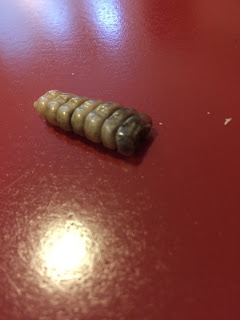 |
| Snake rattle Tiny Natural History Museum |
SILVIA: I also have a snake skin.
MARIA: Miller just brought a snake rattle.
SILVIA: Cool. You can see the head. And here’s the emu egg.
MARIA: Wow! I don’t think I’d like that to hatch.
SILVIA: “Donated by the Easter Bunny”. *giggles*
MARIA AND MILLER: *giggles*
SILVIA: Oh yeah, these are my puppy’s. We had a puppy, she’s now a dog –ish, but she’s still really young acting, and these are teeth that she lost when she was little. They’re really tiny.
MARIA AND MILLER: Did you just find them sticking out of toys or the carpet?
SILVIA: Yeah, they were laying on the carpet and I found them. You could see them as little specks of white, ‘cause our carpet’s kind of gray.
MARIA AND MILLER: Our dog, Trixie, we’re glad we weren’t around when she was a puppy.
SILVIA: The acorn is really big. Here’s it compared to my hand. I have some crab shells, too. Papi John got them for me. They’re horseshoe crabs and they have a pointy tail. They’re flat, and have eyes on the side and look like they could be roaming around on the ground. I also recently got some baby crabs; they’re really tiny. Someone found them on a walk, walking their dog. And then they sent me a bunch of them.
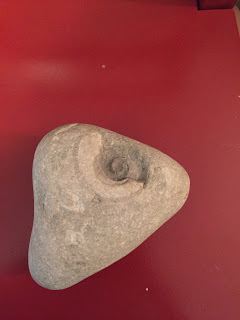 |
| Ammonite Tiny Natural History Museum |
MARIA: This is an ammonite I found in Lake Michigan. We also found some spine bones embedded in a big chunk of rock. I also have this big oyster shell, it’s fossilized.
SILVIA: When I was little I went to this daycare. On the playground they had a bunch of rocks, and sometimes there were fossils in the rocks. And, I’d pick them up and say “Oh, there are fossils and tiny little shell things in it.”
MARIA AND MILLER: I bet not many people did that. They’d be playing on the swings, and we’d be finding fossils.
SILVIA: Yeah. Looking at the rocks: “Rocks with fossils. They’re so tiny!”
MARIA AND MILLER: I bet the daycare didn’t even know the rocks had fossils. Pretty cool.
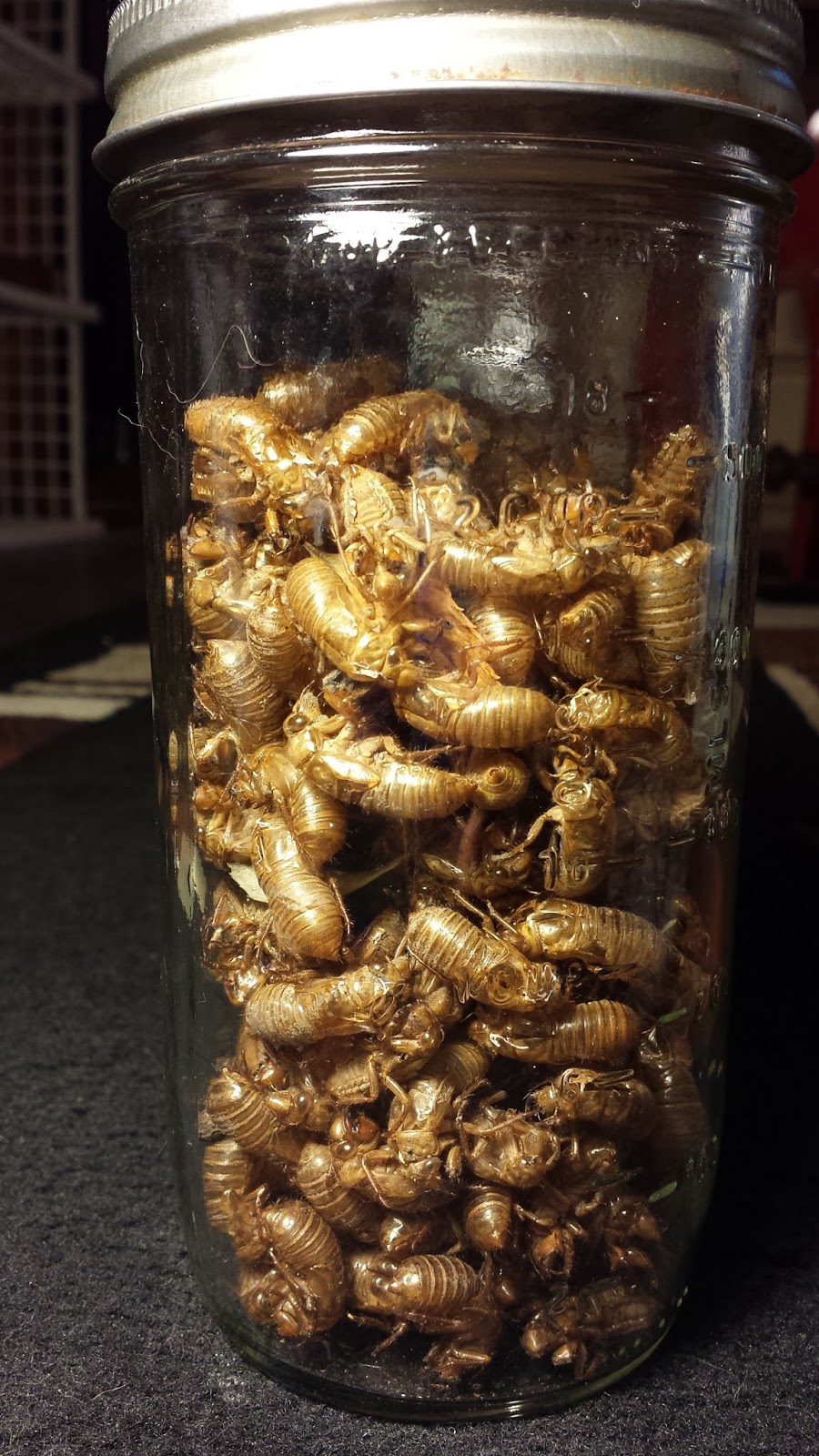 |
| Cicada exoskeletons Silvia’s Nature Museum |
SILVIA: Also I have a tarantula embedded in acrylic.
MARIA AND MILLER: Is it dead and curled up?
SILVIA: No, it was probably an art project that the plastic was poured in and its legs are stuck in it.
MARIA AND MILLER: So, like one of those bug marbles?
SILVIA: Kind of.
MARIA AND MILLER: Oh. I had a few bug marbles, but they got lost. But, tarantula, that would be a big marble.
SILVIA: Yeah. It’s in a clear plastic dish, and its body is sticking out when just its legs in there.
MARIA AND MILLER: So, the next thing I’m going to do is go on Facebook and like and look at your page for cool stuff. See if I can find the tarantula. Then maybe we can talk again. ‘Bye.
SILVIA: Bye.
I encourage you to post about your own childhood museums, about the moment when—at any age—you became hooked on museums, or about a time when you helped a young person fall in love with our work. On Twitter, if you use the hashtag #butterflymoment, I can find and share your stories.
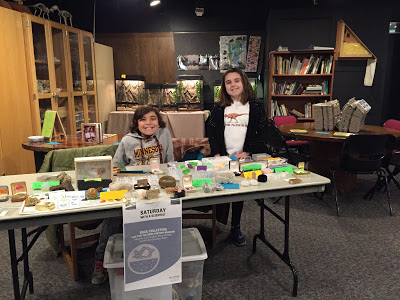 |
| Miller and Maria appearing as Guest Scientists at the Bell Museum of Natural History |








